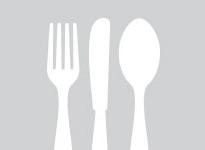You are here
NYT: Pasta Graduates From Alphabet Soup to Advanced Geometry

January 10, 2012
The New York Times
January 9, 2012
Pasta Graduates From Alphabet Soup to Advanced Geometry
Most people eating pasta might enjoy the taste or appreciate the texture of noodles cooked al dente.
Sander Huisman did, too — and then he wondered about what mathematical equation would describe the undulating shapes he was eating.
Mr. Huisman, a graduate student in physics at the University of Twente in the Netherlands, spends much of his days using Mathematica, a piece of software that solves complicated math problems and generates pretty pictures of the solutions.
“I play around with Mathematica a lot,” he said. “We were eating pasta, and I was wondering how easy these shapes would be recreated” with the software.
So that evening after dinner, Mr. Huisman figured out the five lines or so of Mathematica computer code that would generate the shape of the pasta he had been eating — gemelli, a helixlike twist — and a dozen others. “Most shapes are very easy to create indeed,” he said.
He posted one of themto his blog, thinking he would do a sort of mathematical-pasta-of-the-month for the next year. But he then forgot about them until someone asked for the recipes of the other pasta shapes, and he posted those to his blog, too.
Mr. Huisman, who studies fluid dynamics, is not the only who has been mathematically inspired by pasta. Several years ago, Christopher Tiee, then a teaching assistant for a vector calculus class at the University of California, San Diego, included in his notes a pop quiz asking students to match pasta shapes with the equations.
Meanwhile, in London, two architects, Marco Guarnieri and George L. Legendre, independently experienced a similar epiphany, also while eating pasta (spaghetti with garlic and olive oil, cooked by Mr. Guarnieri). Then Mr. Legendre went many steps further: He turned the idea into a 208-page book, “Pasta by Design,” released in September by Thames & Hudson, a British publisher specializing in art books.
“We were interested in, if you like, the amalgamation of mathematics andcooking tips — the profane, the sacred,” Mr. Legendre said. “I was actually speaking to someone in Paris last week who said, ‘This might have been a project by Dali.’ ”
The book classifies 92 types of pasta, organizing them into an evolutionlike family tree. For each, the book provides a mathematical equation, a mouthwatering picture and a paragraph of suggestions, like sauces to eat it with.
Click here to read more.



















